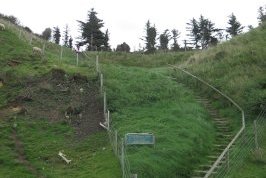Denmark
The Bony Fish Fossils of the Western Limfjord
The Bony Fish Fossils of the Western Limfjord comprise well-preserved fossilized fish fauna from the Eocene, a period of severe climate fluctuations. It also contains fossils of terrestrial fauna such as birds and insects.
Site Info
Official Information
- Full Name
- The Bony Fish Fossils of the Western Limfjord - Evolution and Climate Adaptation in the Earliest Eocene (ID: 6693)
- Country
- Denmark
- Status
-
Nominated 2026
Site history
History of The Bony Fish Fossils of the Western Limfjord
- 2023: Revision
- Successor to "Moler landscapes of the Liim Fiord" (2010-2023)
- 2023: Added to Tentative List
- Added to tentative list
- Type
- Natural
- Criteria
- viii
Links
- UNESCO
- whc.unesco.org
All Links
UNESCO.org
- whc.unesco.org — whc.unesco.org
Community Information
- Community Category
- Paleontology: Non-hominid fossils
Travel Information
Recent Connections
News
No news.
Recent Visitors
Visitors of The Bony Fish Fossils of the Western Limfjord
Community Reviews
Show full reviewsZoë Sheng
The Bony Fish Fossils of the Western Limfjord
The Bony Fish Fossils of the Western Limfjord (Nominated)

I generally don't like fossil sites. I think they are boring and I'd rather read a book about it or look at a website which probably gives me better explanations than the site would. Moler (=Moclay) is clay and a layer of ash that preserved fossils up to 60m deep. Most of these fossils are nothing special, e.g. plants and crustaceans that can be found in many places around the world. What it boasts are good examples of turtles and birds so if you are into that you may want to visit the Molar museum like I did.
The museum is at the northern tip of the island Mors, which maybe not seem like an island from a map view but on closer look you will notice it is only connected via bridges. I crossed the Limfjord (aka Liim Fiord?) from the north via a super short ferry ride. I met a couple biking around the entire area which apparently is a common thing to do in Denmark. After all, most of it is super flat. They had a guidebook for the area and it had a lot of info on Moler. It also showed a grave site just after the ferry crossing marked as "Kong Fegges grav", a grave of a former king. The grave isn't really important but this was the steepest cliff, called Feggeklit, I ever climbed in Denmark! (in other words it takes 2 minutes to get up to the top). The view from there …
Keep reading 0 comments